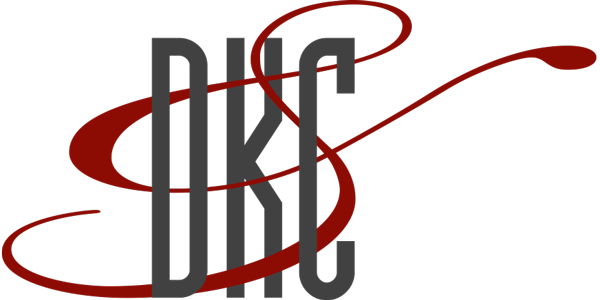Heath Care Decision
Supreme Court Hands Down Landmark Health Care Decision – Now What?
On June 28, the U.S. Supreme Court issued its long-awaited landmark decision on the Patient Protection and Affordable Care Act (PPACA) and its companion law, the Health Care and Education Reconciliation Act (HCERA). In a 5 to 4 decision of historic proportions, the nation’s highest court upheld the law – except for a certain Medicaid provision involving state funding. Key to the Court’s approval of President Obama’s signature health care law was the finding that the linchpin individual mandate was constitutional. The requirement under the individual mandate that individuals pay a penalty if they fail to carry minimum essential health insurance coverage was declared within the Constitution based upon Congress’s power to tax.
The Supreme Court’s decision preserves all of the far-reaching tax provisions and health insurance reforms that were part of the overall health care reform legislation as passed in 2010. In coming months, lawmakers and legal scholars will examine all of the nuances of the Court’s highly complex decision. More immediately, individuals and businesses are concerned about what steps they need to take next.
Role of Taxes
To a large extent, the Obama administration’s health care law is driven by tax provisions, to provide the carrot, the stick and adequate funding in alternating quantities. The role played by taxes in the new health care provisions is also underscored by the predominate part that the IRS will play in its administration.
Under the health care law, a number of tax provisions are scheduled to take effect in 2013 and beyond. The court’s decision allows the numerous tax provisions within the health care laws to move forward on schedule. Some important provisions have already taken effect; others will take effect in 2013 and 2014. One provision, the excise tax on high-cost employer-sponsored coverage, will not take effect until 2018.
Main Provisions / Effective Dates
PPACA and HCERA include the following tax provisions (not a complete list):
- ♦Small employer Sec. 45R credit, effective for tax years beginning in 2010 – the government will provide a credit of 35 percent of health insurance premiums to small employers (25 percent for tax-exempt organizations. The credit expires after 2015.
- ♦Economic substance doctrine, effective after March 30, 2010 – the economic substance test was codified as a two-prong test, requiring that the transaction change the taxpayer’s economic position in a meaningful way, and that the taxpayer has a substantial business purpose for the transaction.
- Over-the-counter limitations for health accounts, effective for tax years beginning after December 31, 2010 – health accounts, such as flexible spending arrangements, health reimbursement arrangements, health savings accounts, and Archer Medical Savings Accounts, can only reimburse expenses for medicine and drugs if the item is a prescription drug (or insulin).
- ♦Indoor tanning services excise tax, effective on or after July 1, 2010 – amounts paid for indoor tanning services are subject to a 10-percent excise tax. Tanning salons must collect the tax and pay it quarterly.
- ♦Itemized deduction for medical expenses, effective for tax years beginning after December 31, 2012 – the threshold for deducting medical expenses as an itemized deduction is raised from 7.5 percent to 10 percent of adjusted gross income.
- ♦Additional 0.9% Medicare tax, effective after December 31, 2012 – an additional 0.9 percent Medicare tax is imposed on wages and self-employment income of higher-income individuals: individuals – above $200,000; married filing jointly – above $250,000; married filing separately – above $125,000.
- 3.8% Medicare contribution tax, effective after December 31, 2012 – a 3.8 percent Medicare tax is imposed on unearned income for higher-income individuals, including interest, dividends, annuities, royalties, rents and other passive income.
- ♦Medical device excise tax, effective for sales after December 31, 2012 – a 2.3 percent excise tax is imposed on sales of certain medical devices by manufacturers, producers and importers. Retail items such as eyeglasses are excluded from the tax.
- ♦Employer shared responsibility, effective after December 31, 2013 – the “employer mandate”: an applicable large employer (50 or more full-time employees) must make a payment if any full-time employee can receive the premium tax credit. The payment is required if the employer does not offer minimum essential coverage, or offers coverage that is not affordable.
- ♦Branded prescription drug fees, effective for calendar years beginning after December 31, 2010 – an annual fee imposed on manufacturers and importers with receipts from branded prescription drug sales.
- ♦Sec. 36B premium assistance credit, effective for tax years ending after December 31, 2013 – lower-income individuals who obtain health insurance coverage through an insurance exchange may qualify for the credit, unless they are eligible for other minimum essential coverage.
- ♦Excise tax on high-dollar insurance, effective for tax years beginning after December 31, 2017 – employer-sponsored health coverage whose cost exceeds a threshold amount ($10,200 for self-on coverage; $27,500 for other coverage) will be subject to a 40-percent excise tax.
Looking Ahead
Employers, taxpayers – indeed everyone – must prepare for sweeping changes in health care in coming years. Many of the provisions in the PPACA have already been implemented or are in the process of being implemented. Other provisions, as the above list indicated, are scheduled to take effect after 2012. The Supreme Court’s upholding of the PPACA clears the way for full implementation of the new law (unless a future Congress votes to repeal the law, which at this point would be an uphill battle).



